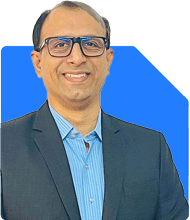My age is 37 i have pf balance as 4 lakhs my monthly contribution is 4000 how much i have to invest in ppf i have lic policies yearly 50000 premium to acheive 1 cr what i have to invest
Ans: it's great that you've shared your current financial details. This clarity is important for making decisions. You have a PF balance of Rs 4 lakhs, and you contribute Rs 4,000 monthly to it. Additionally, you pay Rs 50,000 annually in premiums for LIC policies. You aim to build a corpus of Rs 1 crore.
To help you make an informed decision, let's look at your existing financial assets and potential future investment strategies from a 360-degree perspective.
Evaluating Your PF Contribution
The current PF contribution of Rs 4,000 per month, which adds up to Rs 48,000 per year, is a decent start. PF is a safe investment option, as the interest is compounded annually, and it's a debt instrument with guaranteed returns.
Consideration: Since PF is a long-term savings tool, its primary advantage lies in being relatively low-risk. It is also tax-efficient, with both the contributions and interest earned being tax-free.
Improvement: Increasing your monthly contribution to the EPF (if possible) can boost your retirement corpus significantly over the years. But your current contribution is already aligned with long-term goals, so the focus could shift to other investments.
Your LIC Policies: Insurance and Investment
You pay Rs 50,000 annually towards LIC policies. While LIC offers a safe insurance cover, it might not offer the best returns when it comes to investment growth. Investment-cum-insurance policies generally yield lower returns than pure investments like mutual funds. It’s important to keep insurance and investment goals separate.
Advice: Evaluate the return on your LIC policies. If they are traditional or endowment plans, the returns may be modest, usually around 4-6% per annum. This might not be sufficient to meet your Rs 1 crore goal.
Suggestion: It could be better to keep only term insurance (which offers high coverage at low premiums) and shift the rest of your investments into mutual funds or PPF for better growth potential. You could consider surrendering any traditional LIC plans and reinvesting in growth-oriented assets like mutual funds.
Your Goal of Rs 1 Crore: Investment Path
To reach Rs 1 crore, you need to plan your investments carefully. Based on your age (37), you have around 20 years until retirement, which gives you a reasonable time horizon for wealth creation.
Investment Options to Achieve Rs 1 Crore:
Public Provident Fund (PPF)
PPF is another safe investment option, especially for risk-averse investors. It offers tax-free returns and a current interest rate of about 7.1% (subject to change). You can invest up to Rs 1.5 lakh annually in PPF.
Recommended Contribution: To build your Rs 1 crore corpus, you can start by contributing Rs 12,500 per month (Rs 1.5 lakh annually) to PPF. However, the PPF alone might not be enough due to its current interest rate.
Insight: If you solely rely on PPF, you would need to continue contributing consistently for around 20 years. Since PPF is a safe investment, it will protect your capital, but may not provide the accelerated growth needed to achieve Rs 1 crore by itself.
Equity Mutual Funds
Mutual funds, especially equity funds, offer much higher growth potential than PPF or LIC policies. Given the long-term horizon you have, you could consider investing in actively managed mutual funds that offer returns averaging around 10-12% per annum over the long term.
Suggested Approach: If you invest Rs 10,000 - 15,000 per month in mutual funds, particularly in flexi-cap funds, you will be able to generate significant wealth over time.
Benefit of Actively Managed Funds: Actively managed mutual funds outperform index funds or direct funds due to the fund manager’s expertise in balancing the portfolio. You also get professional management, which helps in beating market volatility.
Systematic Investment Plans (SIP)
If you're looking for regular, disciplined investing, a SIP in mutual funds is ideal. Even small monthly investments compound significantly over time due to the power of compounding.
Suggested SIP Amount: You could start with a SIP of Rs 15,000 - 20,000 per month. This amount, invested in equity mutual funds, could help you reach your Rs 1 crore goal within 15-20 years.
Key Insight: SIP in equity funds offers the potential to beat inflation and provide the long-term growth you need.
National Pension Scheme (NPS)
The NPS is another option that can supplement your PF. NPS offers a balanced portfolio of equity, corporate bonds, and government securities, with the option to choose the allocation based on your risk appetite.
Advice: You can increase your contributions to NPS. It’s a tax-efficient retirement tool where returns from equities could also help you meet your corpus goals.
Long-Term Growth: NPS provides a mix of equity and debt, which balances risk and reward. Over a 15-20 year period, this could be another avenue to generate long-term wealth.
Assessing the Purchase of the Car
Now, let's address the car purchase.
You plan to buy a car worth Rs 27 lakhs, with a down payment of Rs 10 lakhs. While you have the additional Rs 10 lakh for the down payment, you should carefully consider whether this purchase fits within your overall financial goals.
Car as a Depreciating Asset: A car is a depreciating asset. It loses value over time, unlike investments that grow your wealth. Paying Rs 10 lakh as a down payment will reduce your liquid assets. Additionally, you will have a loan to pay off, which might affect your cash flow and monthly budget.
Home Loan Impact: You already have a home loan for Rs 9 lakhs, with an EMI of Rs 25,000 per month. Taking on another EMI for the car might stretch your monthly finances, especially if your total outflows increase significantly.
Suggestion: Before making the car purchase, consider whether this is the right time. Focus on clearing your existing home loan first. Once your loan burden decreases, you can comfortably afford a car without affecting your future financial goals.
Balancing Liquidity and Long-Term Goals
It’s important to maintain a balance between liquidity (cash in hand) and long-term investments. If buying a car leaves you with minimal liquid assets, you might find it challenging to meet unexpected expenses or opportunities.
Emergency Fund: Ensure you have a sufficient emergency fund before making large purchases. Ideally, this fund should cover 6-12 months of expenses.
Invest the Extra Rs 10 Lakh: Instead of using the Rs 10 lakh as a down payment for a car, consider investing it in equity mutual funds or PPF. This will help you build your long-term corpus faster while keeping your finances stable.
Final Insights
To summarise, here are the key actions that can help you meet your goal of Rs 1 crore:
Increase your PPF contributions to Rs 12,500 per month for safe and tax-efficient returns.
Start a SIP in equity mutual funds with Rs 15,000 - 20,000 per month. This will give you the growth needed to reach Rs 1 crore in 15-20 years.
Reassess your LIC policies. Keep only the term plan and consider surrendering any traditional plans. Reinvest that money in high-growth options like mutual funds.
Delay the car purchase until your home loan is cleared. It will give you more financial flexibility in the future.
By taking these steps, you will be on track to build your Rs 1 crore corpus while balancing your immediate needs, such as the car purchase.
Best Regards,
K. Ramalingam, MBA, CFP
Chief Financial Planner,
www.holisticinvestment.in
https://www.youtube.com/@HolisticInvestment






























